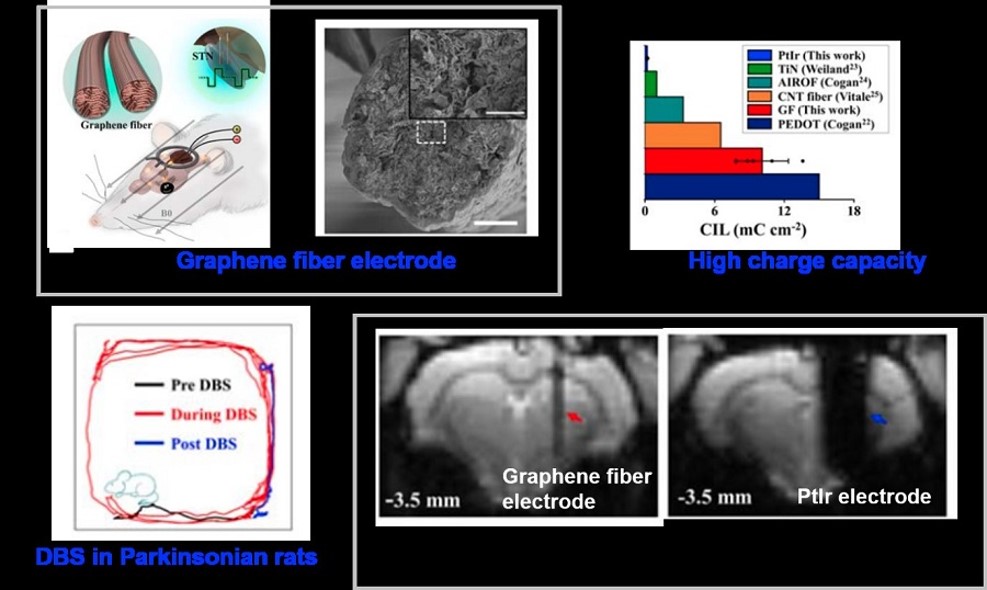Simultaneous deep brain stimulation (DBS) and functional magnetic resonance imaging (fMRI) is critical for understanding the functional neural networks and the therapeutic effects and mechanisms of DBS therapies. Conventional DBS electrodes typically lead to severe distortion of the surrounding magnetic field, which creates large artifacts in MR images and thus impedes the functional investigation of DBS-fMRI.
Recently, collaboration between Dr. DUAN Xiaojie’s group from Department of Biomedical Engineering, College of Engineering, Peking University and Dr. LIANG Zhifeng’s group from the Center for Excellence in Brain Science and Intelligence Technology, Institute of Neuroscience, CAS, has led toa novel MRI compatible, graphene fiber DBS electrode. Using a Parkinsonian rat model, this novel electrode achieved full activation pattern mapping by simultaneous deep brain stimulation and fMRI,and revealed close relationship between fMRI activation and DBS therapeutic improvement.
This novel graphene fiber DBS electrode has 70 times more charge injection capacity than clinical platinum-iridium (PtIr) electrodes, and exhibits much smaller artifacts in both T2 weighted structural images and T2* weighted functional echo planar images (Figure 1) at
a high field of 9.4-Tesla. In addition, this electrode shows high stability under continuous overcurrent pulsing. Using this graphene fiber DBS
electrode, subthalamic nucleus (STN) was stimulated as the DBS target in a Parkinsonian rat model, which significantly improved rats’ motor
ability and reduced the motor deficit.
This work was published in Nature Communication on April 14, 2020 (DOI: 10.1038/s41467-020-15570-9). Graduate students ZHAO Siyuan and Li Gen from Peking University were co-first authors, and Dr. DUAN Xiaojie and Dr. LIANG Zhifeng were co-corresponding authors.
This work was supported by National Natural Science Foundation of China, Chinese Academy of Sciences , Ministry of Science and Technology of the People′s Republic of China.
Figure 1. High MRI compatibility of graphene fiber electrode (Image by CEBSIT)
